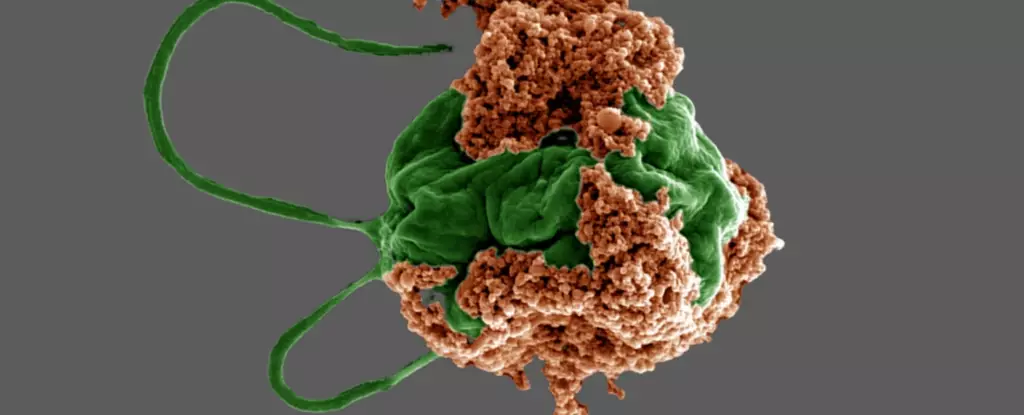Traditional cancer treatment methods often fall short when it comes to targeting tumors that have spread to the lungs. Conventional chemotherapy is inefficient in this regard, as it does not directly focus on the lungs and may not accumulate in high enough concentrations to effectively kill the tumors. However, a groundbreaking solution may be on the horizon thanks to the innovative work of researchers at the University of California, San Diego.
A team of researchers from the Wang lab and Zhang Research Group have dedicated the past five years to developing biohybrid microrobots that could revolutionize cancer treatment. These microscopic robots are made from a combination of natural and synthetic materials, offering a novel approach to delivering drugs to the lungs. Unlike traditional synthetic microrobots, which are often rigid and toxic to humans, these biohybrid microrobots utilize microalgae as a key component.
Microalgae, specifically Chlamydomonas reinhardtii, have proven to be a game-changer in the realm of drug delivery. These tiny organisms possess the unique ability to move autonomously through organs like the lungs, thanks to their flagella hair-like appendages. This natural movement ability allows the biohybrid microrobots to access hard-to-reach areas and distribute drugs more effectively. Additionally, microalgae are less toxic, cost-effective, and easier to produce compared to other microorganisms.
The biohybrid microrobot developed by the researchers, known as the algae-NP(DOX)-robot, combines live green microalgae with nanoparticles coated in red blood cell membranes. The use of cell membranes as a natural camouflage enhances the microrobot’s biocompatibility and prevents it from being attacked by the patient’s immune system. Within these nanoparticles is a common chemotherapy drug called doxorubicin, which is released gradually once the microrobot reaches the lungs.
In animal studies involving mice with lung metastases, the algae-based microrobots demonstrated significant promise in delivering chemotherapy directly to the lungs. By administering the microrobots through the trachea, researchers were able to transport the drug efficiently while minimizing side effects on other organs. The biohybrid microrobots were found to accumulate in greater concentrations and remain in the lungs longer than free drug or static drug-loaded nanoparticles. This improved drug delivery method led to a reduction in lung tumors and an extension in the survival of treated mice.
The findings from these experiments suggest that biohybrid microrobots could offer a powerful new approach to treating pulmonary diseases, including cancer. While the research is still in the experimental stages, the potential of integrating additional motion control strategies like magnetic guidance or ultrasound trapping could further enhance drug delivery accuracy. Moving forward, the researchers aim to expand the application of biohybrid microrobots to treat other challenging lung-related diseases such as cystic fibrosis and idiopathic pulmonary fibrosis.
The combination of living microalgae with cell membrane-coated nanoparticles to deliver drugs represents a promising avenue for bioengineered cancer treatments. The innovative approach taken by the researchers at the University of California, San Diego, opens up new possibilities for more effective and targeted therapies for lung-related diseases. While it may take time for these biohybrid microrobots to transition into clinical use, the potential benefits they offer are truly groundbreaking in the field of cancer treatment.


Leave a Reply